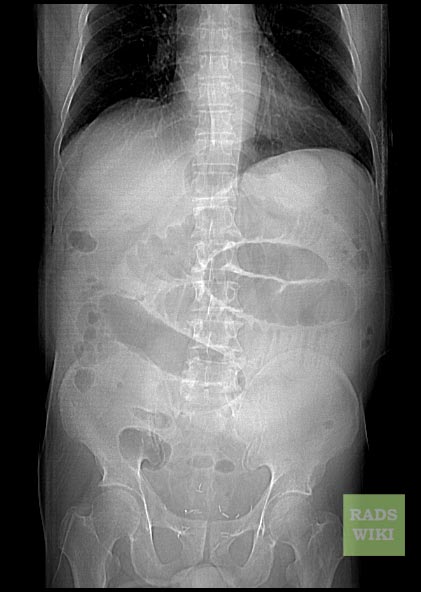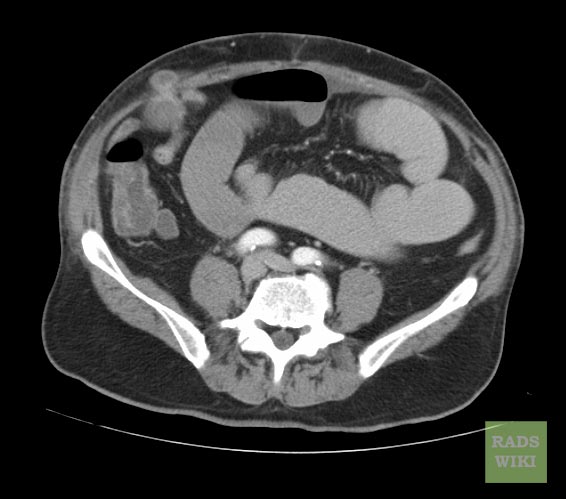Spigelian hernia
|
WikiDoc Resources for Spigelian hernia |
|
Articles |
|---|
|
Most recent articles on Spigelian hernia Most cited articles on Spigelian hernia |
|
Media |
|
Powerpoint slides on Spigelian hernia |
|
Evidence Based Medicine |
|
Clinical Trials |
|
Ongoing Trials on Spigelian hernia at Clinical Trials.gov Trial results on Spigelian hernia Clinical Trials on Spigelian hernia at Google
|
|
Guidelines / Policies / Govt |
|
US National Guidelines Clearinghouse on Spigelian hernia NICE Guidance on Spigelian hernia
|
|
Books |
|
News |
|
Commentary |
|
Definitions |
|
Patient Resources / Community |
|
Patient resources on Spigelian hernia Discussion groups on Spigelian hernia Patient Handouts on Spigelian hernia Directions to Hospitals Treating Spigelian hernia Risk calculators and risk factors for Spigelian hernia
|
|
Healthcare Provider Resources |
|
Causes & Risk Factors for Spigelian hernia |
|
Continuing Medical Education (CME) |
|
International |
|
|
|
Business |
|
Experimental / Informatics |
Editor-In-Chief: C. Michael Gibson, M.S., M.D. [1] Associate Editor(s)-in-Chief:
Please help WikiDoc by adding content here. It's easy! Click here to learn about editing.
Overview
A Spigelian hernia (or lateral ventral hernia) is a hernia through the spigelian fascia, which is the aponeurotic layer between the rectus abdominis muscle medially, and the semilunar line laterally. These hernias almost always develop at or below the linea arcuata, probably because of the lack of posterior rectus sheath. These are generally interparietal hernias, meaning that they do not lie below the subcutaneous fat but penetrate between the muscles of the abdominal wall; therefore, there is often no notable swelling.
Most of these hernias are small, and, as such, there is a high risk of strangulation. Most of them develop around age 50 (4th-7th decade of life). As an entity, they are rare,[1] when compared other types of hernias.
Historical Perspective
Adriaan van den Spiegel, a surgeon-anatomist born in Brussels, described this hernia in 1645.
Classification
Pathophysiology
Causes
Differentiating Spigelian hernia from Other Diseases
Epidemiology and Demographics
Risk Factors
Screening
Natural History, Complications, and Prognosis
Natural History
Complications
Prognosis
Diagnosis
Diagnostic Criteria
History and Symptoms
Physical Examination
Patients typically present with either an intermittent mass, localized pain, or signs of bowel obstruction.[1] Ultrasonography or a CT scan can establish the diagnosis.
Laboratory Findings
Imaging Findings
CT
CT demonstrates small bowel obstruction secondary to a right spigelian hernia
Other Diagnostic Studies
Treatment
Medical Therapy
These hernias should be repaired because of the high risk of strangulation;[2] fortunately, surgery is straight-forward, with only larger defects requiring a mesh prosthesis.
Surgery
Prevention
External links
References
- ↑ 1.0 1.1 Larson DW, Farley DR (2002). "Spigelian hernias: repair and outcome for 81 patients". World journal of surgery. 26 (10): 1277–81. doi:10.1007/s00268-002-6605-0. PMID 12205553.
- ↑ Vos DI, Scheltinga MR (2004). "Incidence and outcome of surgical repair of spigelian hernia". The British journal of surgery. 91 (5): 640–4. doi:10.1002/bjs.4524. PMID 15122618.

